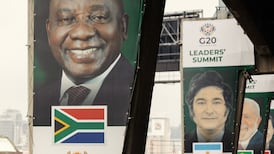A majority of Germans and Italians may no longer believe in God, but they still believe in Reinhold Messner.
For them the 79-year-old mountaineer, born to a German-speaking family in Italy’s South Tyrol region, is a modern-day giant. He was the first person to climb Everest without supplementary oxygen and the first to climb all 14 of the world’s 8,000m peaks.
But now his latter record is in doubt after mountain researchers published a study claiming he fell short during a 1985 climb of the summit of Annapurna in Nepal.
German researcher Eberhard Jurgalskis says historical misidentification of the peak means that many climbers, including Messner, failed to reach Annapurna’s actual 8,091m summit.
READ MORE
The Jurgalskis study of 44 people who claim to have climbed all 8,000 peaks – drawing on satellite imagery, photo archives and accounts from other climbers – concludes that Messner’s account of his climb did not add up.
While the mountaineer says he saw the base camp from the summit, Jurgalskis insists no mountaineer at the true summit can see the camp. As a result, Messner will no longer feature in the Guinness Book of world Records.
“We talked about this step for two or three years, first publishing the results in anonymised form, then I was so certain that we should publish the full facts,” said Mr Jurgalskis.
Though he has never climbed a Himalayan peak, Mr Jurgalskis insists he had “talented colleagues” who did the legwork and corresponded with Messner about their controversial finding: that he was 65m from and 5m below the true summit of Annapurna.
“In the moment when [my colleague] mentioned how you can’t see the base camp from the peak, Messner broke off contact,” said Mr Jurgalskis to the Süddeutsche Zeitung. “I can understand that mountaineers are disappointed ... for many I am very sorry and sometimes even have tears in my eyes when I find the mistakes.”
Unsurprisingly Messner has not taken kindly to his legacy being challenged by someone he calls an “attention-seeker”.
The mountaineer insists that Annapurna has three peaks, all above 8,000m, that he visited them all and saw his base camp from there.
“How does this person know where we had our base camp? Whether we were 5m higher or not, no one in the world can know that,” he said. It cannot be ruled out, he said, that one of the peak’s snow cornices is higher now than it was back in 1985. So how does he feel to no longer feature in the record books?
“I know what I did,” he told the Frankfurter Allgemeine daily, “and it means nothing to me to no longer be listed alongside the man who made the world’s longest piece of pasta.”
Now American mountaineer Ed Viesturs now holds the 8,000-peak record following the reclassification.
For Craig Glenday, editor-in-chief of the record book, the reclassification was necessary but “should in no way detract from the incredible pioneering achievements made by some of the most significant mountaineers over the past 50 years”.















